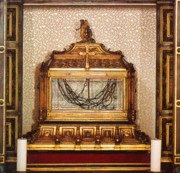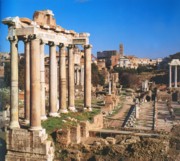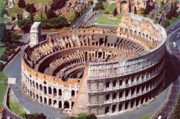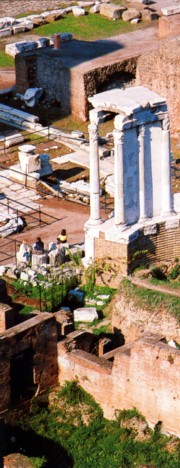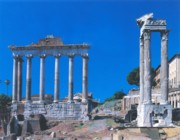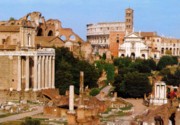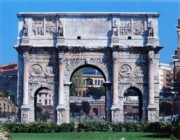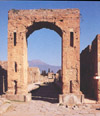
HALF-DAY TOUR OF ANCIENT AND OLD ROME FOR DISABLED INCLUDING SAINT PETER IN CHAINS, COLISEUM AND ROMAN FORUM
Details
GUIDED WALKING TOUR OF ROME FOR DISABLED with St. Peter in Chains, the Coliseum and the Roman Forum
|
DURATION: | 3 hours | |
|
PRICE: | View the price list | |
|
AVAILABILITY: |
All-year-round |
THE PRICE INCLUDES: |
English-speaking Guide for the Half-day Tour of Rome THE ENTRANCE FEES FOR THE ROMAN FORUM AND THE COLISEUM ARE NOT INCLUDED |
All the the monuments included in this Tour have been equipped to accommodate persons with reduced mobility.
You’ll meet our professional English-speaking guide in the prearranged meeting-point, which can be changed according to guests requirements
This marvellous Walking Tour will take you to the treasures of Rome beginning with the beautiful church of Saint Peter in Chains, which was built under the generosity of an Imperial matron, Eudoxia, daughter of Theodosius the Younger and wife of the Emperor Valentinian III. The chains used by Herod to hold Peter were sent to Eudoxia by her mother, who had received them from the bishop of Jerusalem. To house the chains, the young Eudoxia built the basilica which was called “Eudoxiana”, or more commonly “San Pietro in Vincoli”.
We’ll continue our Tour to one of the greatest wonders of Roman history: the Coliseum. The Coliseum had the same function as a modern giant stadium, but the favourite spectacles in Roman times were the games of the Circus, which probably had been invented in the late Republican era, with the intention of cultivating the war-like spirit that had made Romans the conquerors of the world. This was the origin of the professional gladiators, who were trained to fight to the death, while wild beasts of every sort increased the horror of the show. Dion Cassius said that 9000 wild animals were killed in the one hundred days of celebrations which inaugurated the amphitheatre. After the animals were killed and removed, the Arena was often filled with water in order to stage naval battles. The Emperor Constantine and his successors tried to put an end to the gladiatorial fights, but at first the Romans did not want to give up their customary shows. At the beginning of the 5th century, a monk called Telemachus came from the east and one day entered the arena and tried to put himself between the gladiators. He appealed to the people to give up their horrid games. The crowd hurled insults, sarcasm, and ultimately rocks, stoning the intruder to martyrdom. But that day the games were brought to an end.
The last stop on our Tour is the Roman Forum, the monumental complex whose remains lie between the Capitol Hill, the Imperial Fora, the Coliseum and the Palatine Hill. The centre of the civic and economic life in Republican times, the Forum maintained an important role also in the Imperial period. With the fall of the Roman Empire in the west, however, it went decline. An earthquake in 851 during the papacy of Leo IV caused extensive damage, but the decisive blow was the devastating fury of the Normans who, although they came to Rome in 1084 ostensibly to help Pope Gregory VII, sacked and set fire to the city.
The Forum was crossed by the Via Sacra, which led to the Capitol Hill and also served as the route of the triumphal processions of victorious generals laden with booty and followed by ranks of prisoners. While the oldest sections of the Forum (built in the Republican era) stretched from the opposite side of the valley to the edge of the Capitol Hill, the entrance on the square of the Coliseum leads to the most recently built section, which dates from the Imperial Age. On the Via Sacra, at the top of the Velia, is the Arch of Titus, which the Senate built after the Emperor’s death in memory of his conquest of Jerusalem. On the inside of the arch are two fine bas-reliefs: the Emperor on his triumphal chariot and the procession of the Jewish prisoners carrying a seven branched candelabrum.
The Temple of Antoninus and Faustina is the best preserved building in the Forum. This temple was transformed in the middle ages into the church of “San Lorenzo in Miranda”.
Many pagan temples were converted into Christian churches, including the ancient Church of St. Cosmos and Damian, built in 572 by Felix IV inside the “Templum Sacrae Urbis” which the Emperor Vespasian had constructed in the adjacent “Forum of Peace” (or “Vespian’s Forum”).
SUGGESTIONS:
Take water, camera & sun cream. In low season warmer clothing may be required!


